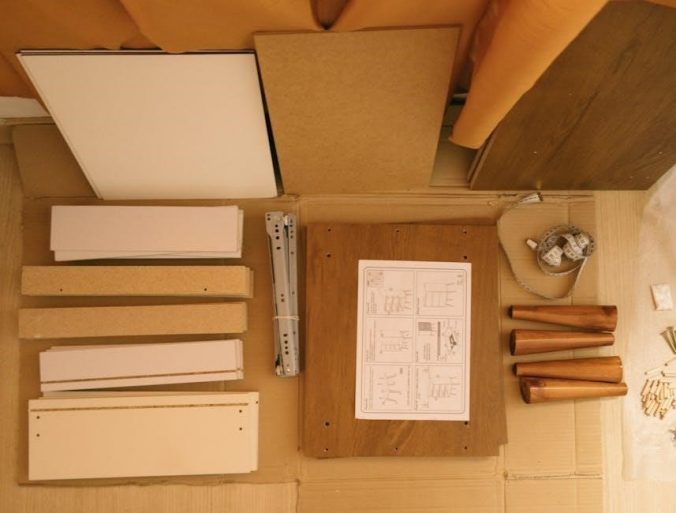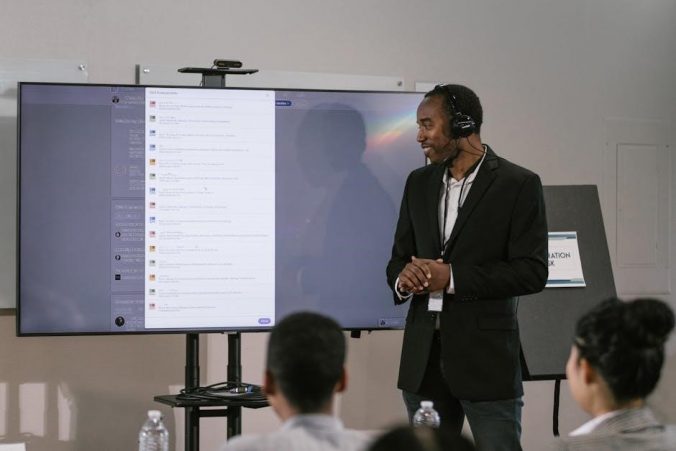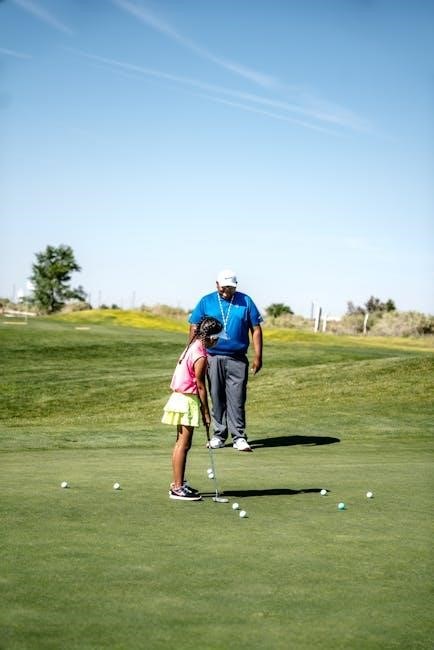Installing a Jeep Wrangler JK hardtop seal kit is crucial for preventing leaks and ensuring a weather-tight fit. This guide provides step-by-step instructions for a successful installation, emphasizing proper techniques and tools to achieve a durable seal. Follow these directions carefully to maintain your Jeep’s interior protection and overall performance.
Overview of the Hardtop Seal Kit
The Jeep Wrangler JK hardtop seal kit is designed to ensure a weather-tight fit and prevent leaks. It typically includes a foam blocker seal, double-sided tape, and adhesive components. The kit is engineered to protect your Jeep’s interior from water, dust, and noise. High-quality materials, such as UV-resistant polyurethane, provide durability and long-lasting performance. The seal kit is easy to install with basic tools and is tailored to fit your JK hardtop perfectly. Proper installation ensures a secure and leak-free connection, enhancing both comfort and safety while driving. This kit is essential for maintaining your Jeep’s reliability and interior condition, especially during off-road adventures or harsh weather conditions.
Importance of Proper Installation
Proper installation of the Jeep Wrangler JK hardtop seal kit is essential for ensuring optimal performance and longevity. A well-sealed hardtop prevents water intrusion, reducing the risk of interior damage and electrical issues. Additionally, it minimizes wind noise during driving, enhancing comfort and driving experience. Correct installation also preserves the structural integrity of the hardtop, maintaining your Jeep’s overall safety and reliability. Improper sealing can lead to leaks, rust, and costly repairs. By following the instructions carefully and using the correct tools, you can achieve a secure and durable seal, ensuring your Jeep remains protected and performs at its best for years to come.
Preparation and Safety Precautions
Before starting the installation, ensure a clean and well-ventilated workspace to avoid inhaling solvent fumes. Remove the old gasket and thoroughly clean the surface area with a good solvent to eliminate dirt, grime, and old adhesive. Wear protective gloves and goggles to prevent skin and eye irritation. Gather all necessary tools and materials, including the new seal kit, double-sided tape, and solvent. Properly align the new seals with the hardtop to ensure a precise fit. Follow manufacturer instructions for applying adhesive and preparing the surface. Improper preparation can lead to installation errors or leaks. Taking these precautions ensures a smooth and successful installation process, protecting both you and your Jeep from potential damage.

Removing the Old Gasket
Remove the old gasket carefully, clean the surface with a solvent, and inspect for debris. Ensure the area is dry and ready for the new seal.
Tools and Materials Needed
To successfully install the Jeep Wrangler JK hardtop seal kit, gather the necessary tools and materials. You will need a trim removal tool to safely detach the old gasket without damaging the surrounding trim. A good-quality solvent cleaner is essential for thoroughly cleaning the surface area, ensuring proper adhesion of the new seal. Double-sided tape, included with most kits, aids in securing the seal. Additional materials like a utility knife for trimming excess sealant, rags for cleaning, and gloves for protection are also recommended. Ensure you have the complete hardtop seal kit, which typically includes the foam blocker seal and adhesive strips. Refer to the manufacturer’s instructions for any specific tools or materials required. Proper preparation ensures a smooth and effective installation process.
Cleaning the Surface Area

Cleaning the surface area is a critical step before installing the new seal. Use a high-quality solvent cleaner to thoroughly wipe down the hardtop and door frame surfaces where the seal will be applied. This removes dirt, grease, and old adhesive residue, ensuring optimal adhesion. Pay special attention to the areas around the edges and corners, as these are common spots for debris to accumulate. Use lint-free rags to avoid leaving behind fibers or residue. Once cleaned, inspect the surface to ensure it is completely dry and free of contaminants. A clean surface guarantees a proper seal, preventing leaks and ensuring long-lasting performance. This step is essential for achieving a professional-grade installation. Always follow safety precautions when handling cleaning solvents. Proper preparation ensures the best results.
Inspecting the Hard Top Surface
Inspecting the hard top surface is essential to ensure it is in good condition for the new seal. Look for scratches, dents, or rust spots that could interfere with the seal’s adhesion. Check for any uneven areas or old adhesive residue that may have been missed during cleaning. If you find significant damage, address it before proceeding. Light scratches can be sanded smooth, while deeper imperfections may require additional repairs. Ensure the surface is even and free of debris, as this will directly impact the seal’s performance. A thorough inspection now saves time and frustration later, ensuring a leak-free and secure fit for your Jeep Wrangler JK hardtop. This step is vital for achieving a professional-grade installation and maintaining the integrity of your vehicle. Always prioritize a smooth, even surface for optimal results. Proper inspection ensures long-lasting performance and reliability;

Preparing the New Seal Kit
Unpack the seal kit and inspect all components for damage. Organize parts according to their application areas. Refer to the manufacturer’s instructions for specific preparation steps. Ensure all adhesives and surfaces are ready for installation. Proper preparation guarantees a seamless installation process.
Understanding the Components of the Seal Kit
The Jeep Wrangler JK hardtop seal kit typically includes a foam blocker seal, double-sided adhesive tape, corner seals, and additional adhesive strips. Each component plays a crucial role in ensuring a watertight fit. The foam blocker seal runs along the hardtop’s edges, providing a soft, flexible barrier against leaks. The double-sided tape secures the foam seal firmly to the hardtop. Corner seals are designed to reinforce high-stress areas where leaks are most common. Adhesive strips may be included for extra sealing protection. It’s essential to familiarize yourself with each part to ensure proper installation. Always refer to the kit’s instructions for specific component details, as variations may exist between manufacturers. Proper identification of each piece ensures a precise and effective installation process.
Aligning the Seals with the Hard Top
Aligning the seals with the hard top is critical for a leak-free fit. Start by placing the foam blocker seal along the hard top’s edges, ensuring it matches the contour precisely. Use the reference marks or notches on the seal to guide proper positioning. Gently press the seal into place, beginning at the corners and working your way along the edges. Double-check that the seal is evenly spaced and not twisted. For accurate alignment, use a straight edge or ruler to verify the seal’s position relative to the hard top’s frame. If necessary, adjust the seal slightly before applying pressure. Proper alignment ensures a tight, even seal and prevents gaps that could lead to leaks. Always refer to the manufacturer’s diagrams for specific alignment guidance.
Applying Adhesive and Preparing the Surface
Before installing the new seal, ensure the surface is clean and dry. Use isopropyl alcohol to wipe away dirt, grease, or old adhesive residue. Allow the surface to dry completely to ensure proper adhesion. Apply a thin, even layer of adhesive to the back of the seal, following the manufacturer’s instructions. Avoid over-saturating the material, as this could compromise the seal’s performance. Let the adhesive sit for a few minutes until it becomes tacky to the touch. This step ensures a strong bond between the seal and the hard top. Once ready, carefully align the seal with the hard top’s edges, pressing firmly to secure it in place.

Installation Process
The installation process involves carefully peeling the backing from the seal, aligning it with the hardtop edges, and pressing firmly to ensure a tight fit. Follow instructions precisely to achieve a proper seal and prevent leaks.
Step-by-Step Guide to Installing the Seal
Begin by carefully peeling the backing from the seal, ensuring it remains aligned with the hardtop edges. Press firmly along the length to secure it. Next, apply the double-sided tape around the perimeter, smoothing out any air bubbles. Position the foam blocker seal along the top edge, ensuring it fits snugly. Double-check the alignment to prevent gaps. Use a rubber roller to apply even pressure across all surfaces for a tight seal. Finally, inspect the entire area to ensure proper adhesion and make any necessary adjustments. Allow the adhesive to set according to the manufacturer’s instructions before testing for leaks.
Using the Double-Sided Tape
Start by thoroughly cleaning the surface where the double-sided tape will be applied to ensure proper adhesion. Peel the backing from the tape and align it with the designated area on the hardtop, pressing firmly to secure it. Use a credit card or similar tool to smooth out any air bubbles, ensuring full contact. Apply even pressure across the entire length to activate the adhesive. Avoid stretching the tape during application, as this can weaken its bond. Once applied, inspect the tape for any gaps or misalignment. Allow the tape to set for a few minutes before proceeding with the seal installation. Proper application ensures a strong bond and a leak-free seal.
Securing the Foam Blocker Seal
After applying the double-sided tape, carefully place the foam blocker seal along the designated edge of the hardtop. Ensure it aligns perfectly with the tape, starting from one corner and working your way around. Gently press the foam into place, making sure it sits flush with the surface. Use your fingers to apply even pressure, ensuring it adheres securely without twisting or bunching. Inspect the seal for any gaps or overlaps. If necessary, trim excess foam with a utility knife for a precise fit. Properly securing the foam blocker seal is crucial for maintaining a tight, weatherproof connection between the hardtop and the vehicle. This step ensures long-term durability and performance of the seal.
Ensuring Proper Alignment and Fit
Proper alignment is critical to ensure the seal functions as intended. Before finalizing, visually inspect the seal’s position relative to the hardtop and vehicle frame. Use a level to confirm the hardtop is properly aligned with the Jeep’s body. Check the entire perimeter to ensure the seal is evenly spaced and not twisted. If misaligned, gently adjust the hardtop or the seal without forcing it, as this could damage the adhesive or the surface. A proper fit ensures a watertight seal and prevents wind noise. Once aligned, perform a test fit by closing the hardtop gently to verify the seal makes even contact across all edges. This step is essential for achieving a leak-free and secure installation.
Post-Installation Checks
After installation, inspect the seal for proper fit and adhesion. Check for any visible gaps or air leaks. Test by spraying water on the seals to ensure watertightness. Verify all components are securely fastened and aligned. Perform a final visual inspection to confirm everything is in place and functioning correctly. This step ensures the hardtop seal performs optimally and prevents future issues.
Inspecting the Seal for Proper Fit
After installing the new seal, carefully inspect it to ensure a tight, even fit. Check for any gaps between the seal and the hardtop, as well as proper alignment with the door and window frames. Verify that the seal lies flat and smooth, with no wrinkles or creases. Inspect all corners and edges for proper adhesion and compression. Use a flashlight to examine hard-to-see areas for any signs of misalignment or air leaks. If any issues are found, gently adjust the seal or consult the instruction manual for troubleshooting steps. A proper fit ensures optimal performance and prevents water intrusion or noise during driving.
Testing for Leaks
After installing the seal, test for leaks to ensure the hardtop is watertight. Start by spraying water with a hose around the edges of the hardtop while another person inspects the interior for water droplets. Pay special attention to areas prone to leaks, such as corners and panel gaps. Use a flashlight to examine the seals from inside the Jeep. If water enters, mark the leak location for further adjustment or resealing. Repeat the test until no leaks are detected. This step is critical to confirm the seal’s effectiveness and prevent water damage or noise during driving. A leak-free hardtop ensures a secure and enjoyable driving experience in all weather conditions.
Final Adjustments and Tightening
After installing the seal, perform final adjustments to ensure a snug fit. Gently press the hardtop to check alignment and make sure it sits evenly. Use a rubber mallet to tap the top into place if necessary. Tighten all hardware securely, but avoid over-tightening, which could damage the hardtop or seals; Use a torque wrench to ensure bolts are tightened to the manufacturer’s specifications (typically 10-15 ft-lbs). Double-check the door seals and alignment to confirm proper fitment. Make any minor adjustments to the seals for optimal performance. Proper tightening ensures long-term durability and prevents gaps that could lead to leaks or noise. Final checks are essential for a secure and reliable hardtop installation.

Maintenance and Care
Regularly inspect and clean the seals to ensure optimal performance. Check for dirt, dust, or debris that may affect the seal’s integrity. Use mild soap and water for cleaning, avoiding harsh chemicals. Inspect the seals every 3-6 months or after heavy off-road use. Replace any worn-out parts promptly to maintain a leak-free seal. Store the hardtop in a dry, protected area when not in use to prevent damage. Avoid using abrasive materials that could scratch the seals. Follow these steps to extend the life of your Jeep Wrangler JK hardtop seal kit and ensure long-term reliability.
Cleaning and Inspecting the Seal Regularly
Regular cleaning and inspection of the Jeep Wrangler JK hardtop seal are crucial for maintaining its performance and preventing leaks. Use mild soap and water to gently wipe down the seals, removing dirt, dust, or debris that may accumulate. Avoid using harsh chemicals or abrasive materials, as they can damage the rubber or foam components. Inspect the seals every 3-6 months or after heavy off-road use for signs of wear, such as cracks, tears, or compression loss. Pay special attention to the areas where the seal meets the hardtop and the double-sided tape. Cleaning and inspecting regularly ensures the seal remains tight and leak-free, preserving the integrity of your Jeep’s hardtop.
Replacing Worn-Out Parts
Replacing worn-out parts of the Jeep Wrangler JK hardtop seal kit is essential to maintain its effectiveness and prevent leaks. Over time, the foam blocker seal and double-sided tape may degrade due to weather exposure or heavy use. Inspect these components regularly for signs of wear, such as cracks, tears, or loss of adhesion. If damage is detected, replace the affected parts immediately to ensure a tight seal. Keep spare parts handy, especially if you frequently remove or reinstall the hardtop. Regular replacement prevents water intrusion and maintains the structural integrity of the seal. Always use high-quality, compatible components to guarantee optimal performance and longevity of the hardtop seal kit. Timely replacements will save you from costly repairs and ensure a leak-free driving experience.
Storage and Protection Tips
Proper storage and protection of the Jeep Wrangler JK hardtop seal kit are crucial to maintain its condition and longevity. When not in use, store the seal kit in a cool, dry place away from direct sunlight and moisture. Use airtight containers or plastic bags to protect the components from dust and debris. Avoid bending or folding the seals, as this may cause creases or damage. Clean the seals with a soft cloth and mild soap before storage to remove dirt and contaminants. Never expose the kit to harsh chemicals or extreme temperatures. For added protection, consider placing the seals on a flat surface to prevent warping. Regularly inspect the stored parts for signs of degradation and replace them if necessary. Proper storage ensures the seal kit remains ready for use and maintains its performance over time.

Troubleshooting Common Issues
Troubleshooting common issues with your Jeep Wrangler JK hardtop seal kit involves identifying leaks, addressing misalignment, and handling adhesive failures. Refer to specific sections below for detailed solutions.
Identifying and Fixing Leaks

Identifying leaks in your Jeep Wrangler JK hardtop seal kit is crucial for maintaining a watertight and dust-free interior. Start by visually inspecting the seals for cracks, gaps, or misalignment. Use a garden hose to simulate rain and observe where water enters the vehicle. Common leak areas include the corners, edges, and drain channels. Clean the affected area thoroughly with a mild detergent to ensure proper adhesion. For minor gaps, apply a small amount of silicone-based sealant. If the leak persists, remove the old seal and reinstall it, ensuring proper alignment and pressing firmly for optimal adhesion. Regularly inspect and maintain the seals to prevent future leaks and ensure long-lasting performance.
Addressing Adhesive Failures

Adhesive failures in the Jeep Wrangler JK hardtop seal kit can lead to leaks and reduced performance. To address this, clean the surface thoroughly with isopropyl alcohol to remove dirt, oil, or old adhesive residue. Ensure the surface is dry before proceeding. Apply a small amount of new adhesive or a high-quality automotive primer to the back of the seal. Press the seal firmly onto the hardtop, starting from the center and working outward to eliminate air bubbles. Allow the adhesive to cure for 24 hours before exposing the vehicle to moisture. Regularly inspect the adhesive for wear and reapply as needed to maintain a secure seal. Proper adhesion is essential for long-term durability and leak prevention.
Dealing with Misaligned Seals
Misaligned seals can compromise the effectiveness of your Jeep Wrangler JK hardtop seal kit. To correct this, start by gently pulling back the misaligned portion and realigning it with the hardtop’s edge. Use a heat gun to soften the adhesive if the seal is stubborn. Once realigned, press firmly to ensure proper adhesion. Regularly inspect the seals for shifting, especially after off-road adventures. If the misalignment persists, remove the seal, clean the area, and reinstall it, ensuring it sits flush with the surface. Proper alignment is crucial to prevent leaks and ensure a tight fit. Addressing misalignment promptly will extend the life of your seal kit and maintain your Jeep’s weatherproofing.

Advanced Tips and Tricks
For optimal results, use high-quality materials and consider custom fitting your seals for enhanced performance. Apply additional sealants sparingly to avoid compromising the kit’s design.
Using Additional Sealants for Extra Protection
Applying additional sealants can provide extra protection against leaks and weathering. Use a high-quality silicone or polyurethane-based sealant, ensuring compatibility with your Jeep’s materials. Apply a thin layer to the edges or corners of the hardtop where leaks are most common. Avoid over-application, as it may interfere with the seal kit’s fit. Allow the sealant to cure fully before reinstalling the hardtop. This step adds an extra layer of security, especially in extreme weather conditions. Always follow the manufacturer’s instructions for the sealant to maintain warranty validity and ensure optimal performance. This method is particularly effective for addressing persistent leaks or enhancing durability over time.
Upgrading to High-Quality Materials
Upgrading to high-quality materials enhances the performance and longevity of your Jeep Wrangler JK hardtop seal kit. Premium materials, such as heavy-duty rubber or silicone, offer superior durability and weather resistance compared to standard options. Look for EPDM rubber, known for its excellent resistance to UV rays, temperature fluctuations, and moisture. These materials ensure a tighter seal, reducing the risk of leaks and noise. When upgrading, focus on critical areas like the edges and corners, which are prone to wear. Always follow manufacturer guidelines for compatibility and installation. Upgrading not only improves functionality but also provides peace of mind for long-term reliability. Consider consulting a professional for complex upgrades to ensure a flawless installation.
Customizing the Seal for Better Performance
Customizing the seal on your Jeep Wrangler JK hardtop can significantly enhance its performance and durability. One effective method is to trim the seals to fit specific areas, ensuring a precise and tight fit. Additional adhesive layers or specialized weatherproofing tapes can also be applied for extra protection. For improved noise reduction and leak prevention, consider reinforcing high-stress areas with additional foam inserts. Always use precision tools, such as a utility knife or cutting mat, to achieve clean cuts and avoid damaging the material. Customizing the seal not only improves functionality but also extends its lifespan. By tailoring the seal to your Jeep’s unique needs, you can enjoy a quieter, drier, and more comfortable driving experience. Regular inspection and adjustments are key to maintaining optimal performance.
Final Thoughts on the Installation Process
Installing a Jeep Wrangler JK hardtop seal kit is a manageable process for DIY enthusiasts and professionals alike, as long as you follow the instructions carefully. Patience and attention to detail are crucial to ensure a proper seal and optimal performance. By taking the time to clean, inspect, and align the components correctly, you can avoid common issues like leaks or misalignment. Remember, a well-installed seal kit not only enhances your driving experience by reducing noise and preventing water intrusion but also protects your vehicle’s interior from the elements. Take pride in your handiwork and enjoy the satisfaction of a job well done, knowing your Jeep is now better equipped for adventures ahead.
Importance of Following Instructions
Following the instructions for your Jeep Wrangler JK hardtop seal kit is essential for achieving a successful installation. Properly executed steps ensure the seal performs as intended, preventing leaks and maintaining a quiet, dry cabin. Deviating from the guide can lead to poor alignment, adhesive failures, or compromised weatherproofing. Clear instructions are designed to address common challenges and streamline the process, making it crucial to adhere to them closely. By doing so, you avoid costly rework and ensure long-lasting performance. Taking the time to follow each step meticulously guarantees a professional-grade result, enhancing both functionality and durability. Remember, precision and patience are key to a flawless installation and years of trouble-free use.
Enjoying a Leak-Free Jeep Experience
A properly installed Jeep Wrangler JK hardtop seal kit ensures a leak-free driving experience, enhancing both comfort and enjoyment. With a secure and watertight seal, you can confidently navigate through rain, snow, or off-road adventures without worrying about moisture intrusion. A leak-free cabin reduces noise, prevents damage to interior components, and maintains a clean, dry environment. This not only protects your vehicle but also preserves its resale value. By following the installation guide and maintaining the seals, you can enjoy uninterrupted adventures in your Jeep, knowing your hardtop is sealed to perfection. A leak-free experience is the ultimate reward for meticulous installation and regular upkeep, allowing you to focus on the thrill of the drive.










